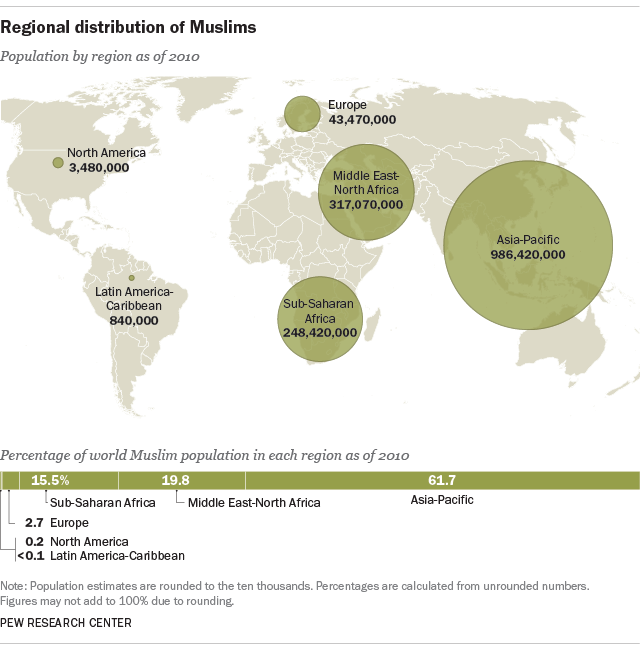How we can study religion without being religious ourselves, or if we are from another religion.
- descriptive vs prescriptive
- who are muslims + demographics
- some historic names and Islamic concepts to note
- looking ahead
Descriptive Vs Prescriptive
How do we talk about religion? Descriptive. This is for scholars of religion - us! Interpret data, texts, art, etc
- We describe what we observe
- We do not assign value
- We are not seeking Truth
We do this because describing phenomena can tell us more about what people do than… Reading a text and thinking that means we know what it says.
Prescriptive is how we ( and our sources ) might talk about religion when they tell us the “right”, “best”, “authentic”, or “real” way to do religion/Islam.
- this could be you imam, rabbi, priest, guru
- but also your mom, uncle, community, society, media
Any time you hear “good muslim”, “real muslim”, “true muslim”, “authentic muslim” - this is prescriptive.
Summary
Descriptive - describe what we observe without assigning value
Who Are Muslims?

Some things you might notice from this chart is the that Middle East has a minority of the world’s muslims. The largest populations are in South Asia (India, Pakistan, Bangladesh) and Indonesia.
A quick reminder from the first day of class:
- Arab does not mean muslim
- Most muslims are not Arab
Arabic is a language spoken by Arabs and non Arabs, but it is not spoken by a vast majority of Muslims.
Arabic is the language of the Qur’an, though modern Arabic ( and all its dialects ) is really different from Qur’anic and Classical Arabic.